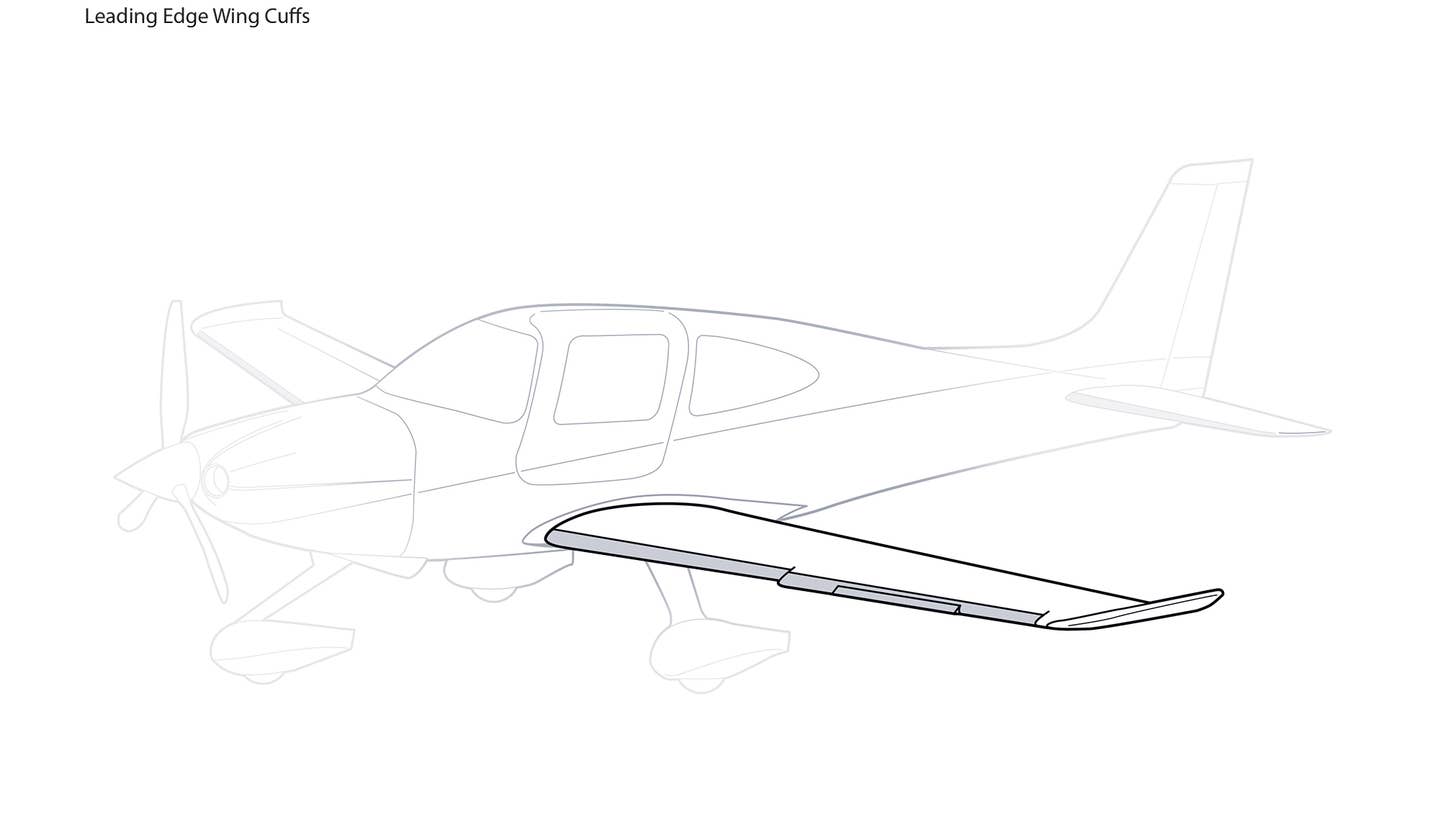

“Stalls and spins represent the largest single factor in fatal general aviation accidents.” Surprisingly, this quote wasn’t pulled from the latest FAA news release, but rather from a NASA Langley Research Center newsletter dated April 1977. Forty years later, stall-spins and loss of control remain pinned to the top of the National Transportation Safety Board’s Most Wanted List of safety improvements. That doesn’t mean no one has tried to reduce the number of LOC-I fatalities.
In this month’s How It Works, we look at the leading-edge wing cuff, a relatively simple concept designed to improve stall-spin resistance and take a bite out of GA accident numbers. The wing cuff is a low-cost modification that causes the wing to behave like two separate spanwise sections, each having vastly different aerodynamic characteristics. The leading edge of the wing’s discontinuity then creates solid spin resistance. The inner portion of the wing nearest the root stalls before the outer section nearer the ailerons. As the pilot increases angle of attack to maintain either a specific airspeed or altitude, the inner portion of the wing reaches its critical angle before the outer section. While the inner portion of the airfoil begins to exhibit buffet from the approaching stall, the outer wing continues to create lift to extremely high angles of attack and hence controllability through the ailerons.
The wing cuff concept used today on the Cirrus SR20 and SR22, as well as the Quest Kodiak, the Cessna TTx and the Icon A5, is not all that different from the version NASA created 40 years ago. In the late 1970s, with its military research efforts in support of the development of the F-14, F-15, F-16 and F-18 completed, NASA engineers realized they had enough resources to turn their attention to developing a method of making GA aircraft more resistant to inadvertent spins and hence reduce the number of accidents. Research that led to the wing cuff began with questions to determine the effects of configuration variables such as how the wing, a fuselage cross section or tail design might tackle stall-spin controllability problems. NASA’s efforts included a look at pilot recovery techniques and modifications that might be added to the leading edge to affect stall-spin behavior.
Initial research was conducted on a highly modified American Yankee, and later, a Piper Arrow, a Beechcraft Sundowner and a Cessna 172. Engineers tried different horizontal tail configurations, including a T-tail, as well as changes to the wing. One member of the engineering team suggested a discontinuous leading-edge droop, later known as the wing cuff. This new modification caused a discrete break in the wing’s lift characteristics midway out to the wingtip. They learned that adding the discontinuity maintained lift far beyond the normal angle of attack. It also added plenty of buffet, but without the abrupt wing drop experienced in early testing.
Flight testing of both stock and modified aircraft was conducted with power off and flaps up. Without the cuff, the modified Yankee would enter a flat spin shortly after the stall when rudder was added. With the cuff, one of 14 potential configurations NASA tried, spin behavior became more benign. NASA researchers knew they were on to something but worried the cuff might also affect aircraft performance. It turned out the cuff had little to no effect on aircraft speed or range. Adding wing cuffs in the aircraft design phase proved to be extremely simple too.
During stall testing with the wing cuff on, test pilots experienced spins characterized by a steep, slow spiral, even with extended pro-spin control inputs. Recovery involved simply relaxing the controls. No matter what the test pilots tried, they could not cause the outer portion of the wing to stall when it included a half-span cuff. When they tried adding a cuff to the entire leading edge, they quickly learned that the new wing shape caused a flat, unrecoverable spin. NASA’s research eventually led to a new category of aircraft certification known as spin-resistant. The research team achieved its goal of using wing cuffs to make aircraft spin resistant for low-time pilots. Removable cuffs added flexibility since it would now permit spin training for experienced pilots as well.

Sign-up for newsletters & special offers!
Get the latest FLYING stories & special offers delivered directly to your inbox






